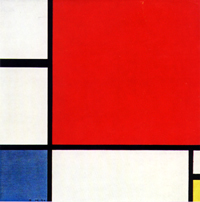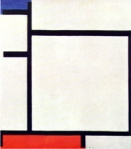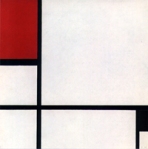The painting we’ll be focusing on today is one of the first pieces that I learned about in my art history courses. At the time, I didn’t really understand the importance of this piece. It’s so simple: only primary colors (plus black and white), geometric patterns. What’s going on with it?
Well, let’s give it a chance and learn about Piet Mondrian’s “Composition with Red, Blue and Yellow”:
- This piece is a variation of two of Mondrian’s previous pieces createda few years prior. The “1922 Composition” and the “1929 Composition” bothshow Mondrian’s process in creating his geometric…compositions (ironic?).
- This piece shows Mondrian’s focus on tightly regimented geometric shapes and contrasting bright colors. In the end, hisgoal was to create balance.
- Mondrian coined the term Neoplaticism , which “gained currency as a descriptive term applied to Mondrian’s theories of art and to his style of painting, in which a grid, delineated by black lines, was filled with blocks of primary colour” (MOMA). This term eventually formed into an art movement.
Something I have yet to discover is why this composition became on of his most famous. The similarities between his two previous works are so close; it makes me wonder what made this one the special one? In addition, he created several other “composition” paintings that are variations of this one. What do you think?



thank u